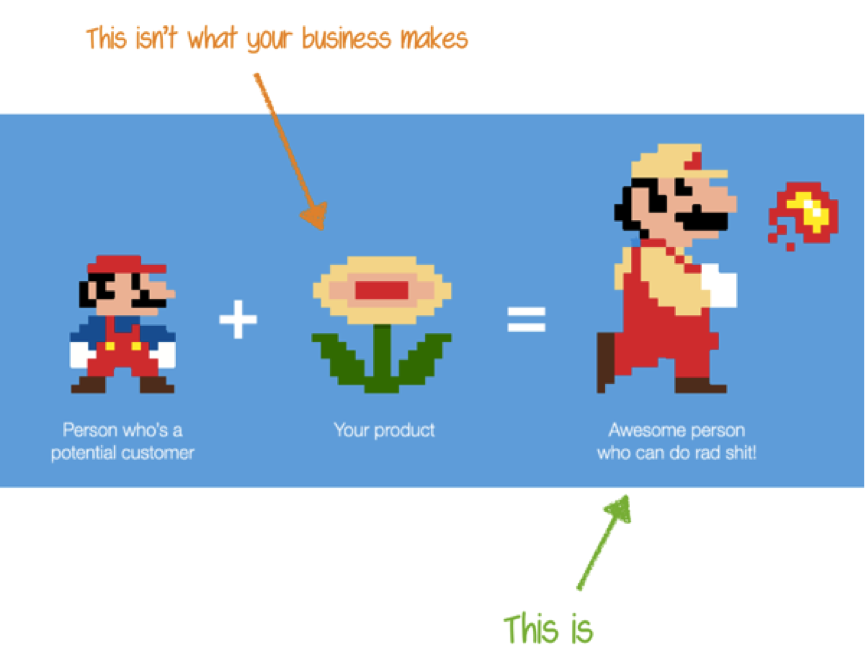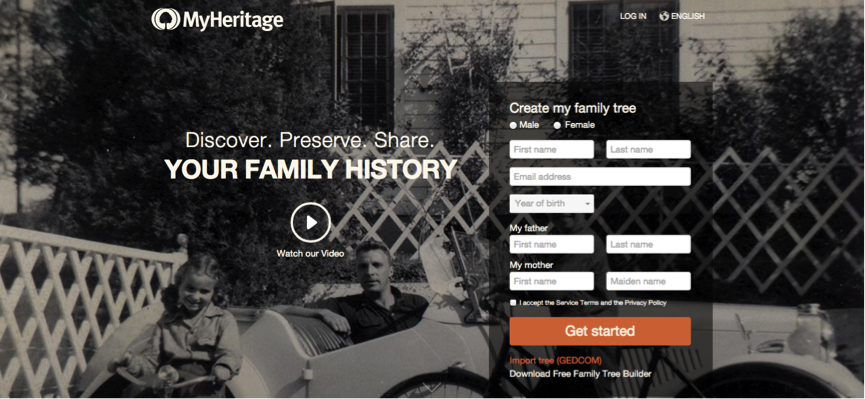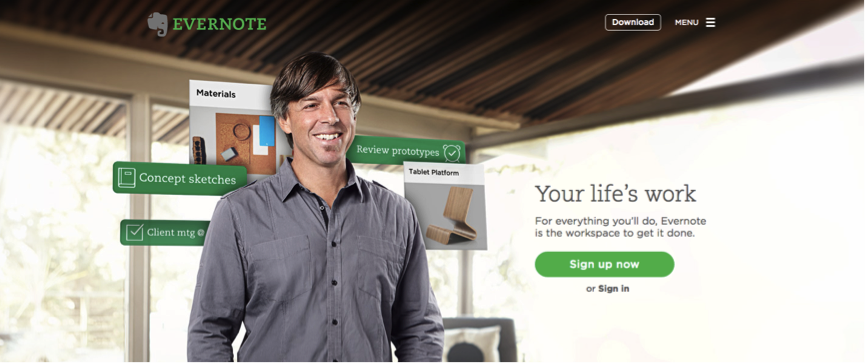3 Questions Marketers Must Ask Themselves Everyday
Having a great product with fantastic features and competitive pricing is great.
But customers don’t care about you, how successful you are, your features or even what you’re selling. Customers care about themselves, and what’s in it for them. In fact, the majority of customers don’t remember where they bought a product or how much it cost; what they do remember is the experience. Building a conversion optimization strategy is all about the customer and how they see your product.
This is one of my favorite images by ‘User Onboard,’ describing what every business in the world sells:
There are probably dozens of companies out there selling the same as you, with cheaper or more expensive pricing, and better or worse features; so what do you offer that’s different? How do you change your customer’s life?
Getting Big Wins With Conversion Optimization
Conversion optimization isn’t just about the numbers. In fact focusing on numbers only will not give you those big wins you read about in blog posts. Conversion optimization is about careful planning, strategy, assumptions and hard work. It’s about learning who your customers are, their story and applying what you’ve learned throughout the entire business, from customer support to sales and marketing, essentially helping you create a better product for your customers.
Effective conversion optimization efforts are built on a conversion optimization strategy; they are data-driven but most importantly they are customer-centered. To really grow a business and benefit from “CRO” you have to view it as a journey, not a result.
These are 3 questions marketers or business owners should answer every day.
3 Questions You Should Answer Every Day:
#1 Who is my customer?
Segmentation is a technical way of showing site visitors specific information according to their online behavior – according to gender, geographical location, the browser they’re using and other behavioral elements.
In 2011 Urban Outfitter’s head of marketing decided to optimize the site’s product displays to match a user’s gender thinking it would increase conversions. This meant women would only see clothes for women and men would only see clothes for men. It backfired as many women were shopping for men’s clothes and vice versa making it an irrelevant segmentation.
There are many good ways to segment traffic according to behavioral elements but another element that marketers don’t put enough emphasis on is the emotional element.
This may sound trivial but how many of you have a detailed portfolio of your customer? I’m not referring just to their technical information but to actual information like
- What they do for a living
- What their daily routine looks like
- What makes them happy
- What disappoints them
By identifying your customer’s profile and understanding who they are you will able to create better experiences online and help visitors become customers. Ask yourself who your customer is everyday and remind yourself that they’re more than just statistics; there are people behind those screens.
Continue reading about this topic:
- Why A/B test aren’t driving the results you want
- 5 psychological triggers that impact your customers
#2 Why Do People Want My Product?
“A lot of times, people don’t know what they want until you show it to them.” Steve Jobs
People buy products or services based on their emotions and then justify their purchases with logical explanations.
To create a better user journey you have to start by understanding the desired result customers have while purchasing your product. Then you need to dig deeper to understand why they want this outcome. Once you understand the emotional reason behind your customer’s purchase, you will be able to provide that to them right within the purchasing funnel.
People mainly buy stuff to either gain pleasure or avoid pain. Whether it’s to replace a product they own, highlight their self-esteem or feel better about themselves, all purchases have an emotional reason behind them and it’s crucial to identify what triggers these emotions.
When it comes down to it, “people don’t buy products they buy better versions of themselves”. When selling your product, are you still describing yourself? Or the person your customer wants to be?
Continue reading about this topic:
Some Great Examples Of Companies Focusing On The “Why”
MyHeritage:
Though they may need to start testing their form, their messaging focuses on the customer’s need for preservation and avoidance of losing precious memories and history. The messaging gives potential customers the sense of security, trust and connection with the past.
Evernote:
“Your Life’s Work”.
You are at the center of attention; Evernote is everything you need it to be.
Products as multipurpose as Evernote face many strategic issues regarding their messaging – most companies try to list all of their features and options on their landing page to “grab” as many prospects as possible.
By focusing on the emotional side and the “What’s in it for me” element Evernote have stepped out of the “features” race.
#3 What is my customer’s story?
At the end of the day you’re communicating and dealing with people. At the heart of your business, you solve problems for your customers, create new dreams, and help people become better versions of themselves. To do that you need to understand your customer’s story and tell that story.
Every story has a hero – an everyday character faced with a challenge and a solution. Your product helps this main character discover within himself the greatness of his own power. This is your customer’s story; in this story you aren’t the hero, your customer is. Your business helps your hero solve her challenges on her own, essentially making her a better hero.
Each story has a moral to it, and focuses on certain values – Your hero connects with those values, tying them into their deepest desires. This means you stop talking about how great you are, and show your audience how great they can be.
Stories are a powerful way of building a relationship with your customers and connecting them to your brand. But your story isn’t about what you want to tell customers, it’s about your customer’s stories. Understanding your customer’s story will align your entire team and improve all communications within and without.
Bryan and Jeffrey Eisenberg’s book ‘Buyer Legends’ is a fantastic guide for creating these stories and getting your team on board.
Back to the Basics:
As companies hire more analysts, focus on user behavior, introduce technical tools and automate their marketing efforts, the importance of connecting to your customer has never been more relevant or important.
Tools and platforms are a great way to create better products or services and put yourself out there. But if you don’t connect with your customers to the point that you know who they are, what they do and what makes them get up in the morning, you never will get those big wins you read about. Big wins and case studies come from carefully creating a strategy, knowing your customers and giving them what they want, not what you want.
Ask yourself and your team these questions every morning, and most importantly, be able to answer them.





Pingback: 3 вопроса, которые маркетологи должны задавать себе каждый день | Блог рекламного агентства Adventum()
Pingback: How to Convert More Customers Using Emotional Targeting()